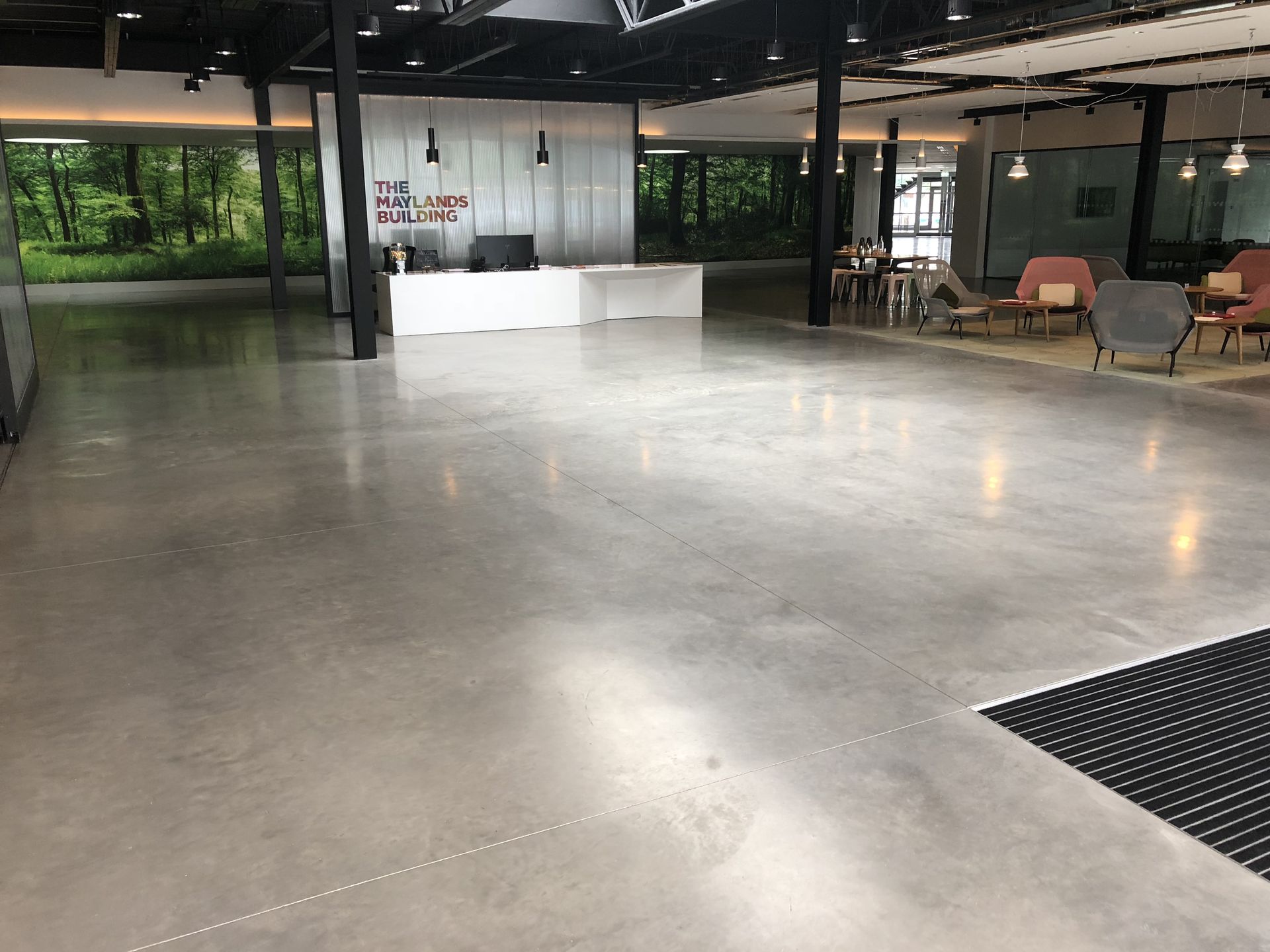As businesses across various industries increasingly prioritise sustainability, the environmental impact of building materials and processes has come under scrutiny. Polished concrete floors have emerged as a sustainable flooring solution that aligns with eco-friendly practices and contributes to green building initiatives. In this article, we will explore the environmental benefits of polished concrete floors, highlighting how this flooring option can help businesses reduce their carbon footprint, conserve resources, and promote a healthier planet.
Reducing Resource Consumption
One of the primary environmental benefits of polished concrete floors is their ability to reduce resource consumption. Here’s how:
- Utilising Existing Concrete Slabs:
- Polished concrete floors are often created by polishing the existing concrete slab in a building. This eliminates the need for additional flooring materials, reducing the consumption of natural resources and the energy required to manufacture, transport, and install new flooring.
- Longevity and Durability:
- Polished concrete floors are incredibly durable and can last for decades with minimal maintenance. Their long lifespan means that they do not need to be replaced as frequently as other flooring options, further conserving resources and reducing waste.
Lowering Energy Usage
Energy efficiency is a critical component of sustainable building practices. Polished concrete floors contribute to energy savings in several ways:
- Thermal Mass Properties:
- Concrete has excellent thermal mass properties, meaning it can absorb, store, and release heat. Polished concrete floors can help regulate indoor temperatures by retaining heat during the day and releasing it at night. This natural temperature regulation can reduce the need for heating and cooling, leading to lower energy consumption and utility costs.
- Enhanced Lighting Efficiency:
- The reflective surface of polished concrete floors increases the efficiency of lighting within a space. By reflecting both natural and artificial light, polished concrete can reduce the need for additional lighting fixtures, lowering electricity use and enhancing the overall energy efficiency of the building.
Minimising Waste and Emissions
The production and disposal of flooring materials can generate significant waste and emissions. Polished concrete floors help mitigate these environmental impacts:
- Reduced Waste Generation:
- Because polished concrete floors make use of the existing concrete slab, there is minimal waste generated during installation. Additionally, the longevity of polished concrete reduces the frequency of floor replacements, decreasing the amount of waste sent to landfills over time.
- Low VOC Emissions:
- Traditional flooring materials and adhesives often contain volatile organic compounds (VOCs) that can off-gas harmful chemicals into the air. Polished concrete floors do not require these materials, resulting in low or zero VOC emissions. This contributes to better indoor air quality and a healthier environment for building occupants.
Supporting LEED Certification
Leadership in Energy and Environmental Design (LEED) is a globally recognised green building certification system that encourages sustainable building practices. Polished concrete floors can contribute to earning LEED points in several categories:
- Materials and Resources:
- By utilising the existing concrete slab and reducing the need for additional materials, polished concrete floors support the efficient use of resources and waste reduction, contributing to LEED credits in the Materials and Resources category.
- Indoor Environmental Quality:
- The low VOC emissions of polished concrete floors enhance indoor air quality, contributing to LEED credits in the Indoor Environmental Quality category.
- Energy and Atmosphere:
- The energy-saving benefits of polished concrete floors, such as improved thermal mass and enhanced lighting efficiency, can contribute to LEED credits in the Energy and Atmosphere category.
Promoting Sustainable Practices
In addition to the direct environmental benefits, choosing polished concrete floors also promotes broader sustainable practices within the construction and building maintenance industries:
- Supporting Local Resources:
- Concrete is often sourced locally, reducing the environmental impact associated with transportation and supporting local economies.
- Encouraging Sustainable Design:
- By opting for polished concrete floors, businesses can set an example for sustainable design and construction, encouraging others in their industry to adopt eco-friendly practices.
Polished Concrete Floors as a Sustainable Choice
In conclusion, industrial polished concrete floors offer a range of environmental benefits that make them an excellent choice for businesses committed to sustainability. By reducing resource consumption, lowering energy usage, minimising waste and emissions, and supporting green building certifications like LEED, polished concrete floors help create a more sustainable built environment. As the demand for eco-friendly building solutions continues to grow, polished concrete floors stand out as a durable, efficient, and environmentally responsible option for commercial and industrial spaces.


